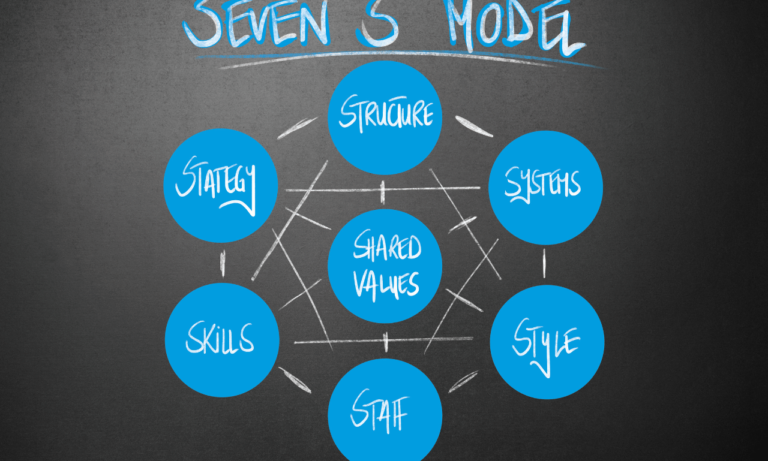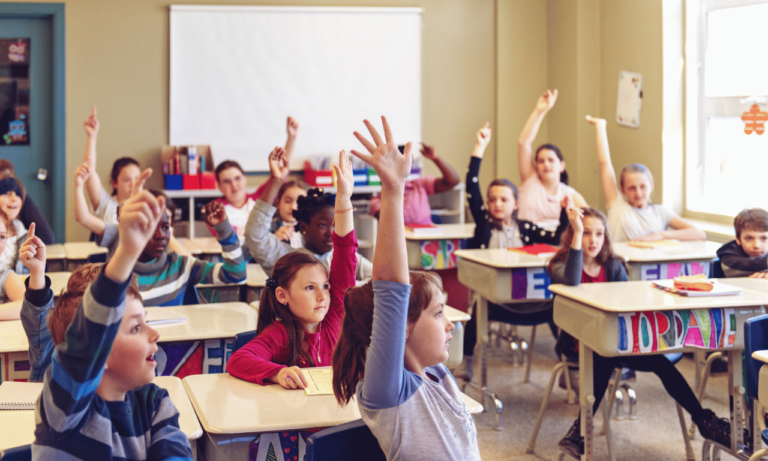Phone:
(+65)8319-0742
The realm of education is continuously evolving, presenting new challenges and opportunities for skill acquisition. At the heart of an effective educational journey lies the nuanced use of Guided Learning Techniques, which strikes a fine balance between leading learners and allowing them the freedom to explore. Employing a personalized learning approach, these techniques offer a robust scaffold that aids students in navigating the learning process with the right blend of support and independence.
Utilizing guided learning strategies involves a two-phased approach: an interactive and hands-on ‘we do’ session facilitated by an instructor, followed by a ‘you do’ segment where learners apply their freshly minted skills independently. This dynamic interplay between instruction and self-directed work ensures not only the uptake of new competencies but also reinforces the learner’s ability to apply them effectively in varied contexts.
Key Takeaways
- Guided Learning Techniques bridge the gap between direct instruction and independent study, optimizing the learning curve.
- Personalized learning approach tailors educational experiences to individual learner needs, enhancing effectiveness.
- Effective strategies employed during guided sessions lay the groundwork for adept skill application during independent practice.
- Instructor-led ‘we do’ sessions instill foundational knowledge, while ‘you do’ phases solidify skill mastery.
- The educational journey is enriched through adaptive learning, ensuring relevant and responsive skill development.
The Integral Role of Guided Practice in Skill Development
Guided practice is a cornerstone of effective education, merging educational guidance with skill development to create a learning environment conducive to student success. By integrating student-centered learning methods and adaptive teaching techniques, educators can offer a curriculum that speaks directly to the needs of each individual learner.
Immediate Feedback and Its Advantages
In an age where information is king, the ability to provide immediate feedback to students becomes an invaluable resource in the learning process. This rapid response allows learners to identify errors and rectify them quickly, solidifying their understanding and contributing to robust skill development. Such responsiveness not only enhances retention but also ensures that misconceptions are corrected before they become ingrained.
Strengthening Student Confidence Through Expert Supervision
Expert supervision within guided practice environments fosters greater student confidence. Through educational guidance, students are reassured that they are on the right path, which is vital for building the self-assurance necessary to take on new challenges. The security that comes with knowing assistance is readily available cannot be underestimated in its power to motivate and engage learners.
Adapting to Diverse Learning Styles
Recognizing and adapting to diverse learning styles is pivotal in today’s multifaceted classrooms. Teachers employing adaptive teaching techniques tailor their approach to fit a spectrum of learners, acknowledging that each student is unique. This adaptability ensures that whether a student is visual, auditory, or kinesthetic in their learning preference, the material is accessible and understandable for all.
Independent Practice: Cultivating Self-Discipline and Ownership

In the realm of education, the pursuit of student independence through independent practice is a cornerstone of effective learning strategies. This practice champions autonomous learning, encouraging learners to take control of their educational journey. With a strong focus on self-discipline, students are expected to engage with material, self-reflect, and traverse the challenges of mastering new concepts on their own.
Independent practice not only consolidates what has been learned but also transitions the responsibility of learning from the educator to the learner. This shift is pivotal for nurturing life-long learning habits, critical problem-solving capabilities, and the grit to conquer academic and real-world problems. As students delve into this personal developmental space, they harness the power of effective learning strategies that align with their unique pacing, preferences, and goals.
- Time Management
- Goal Setting
- Resource Utilization
- Reflective Practices
These staple components of student independence prepare individuals for a future that increasingly valorizes independent initiative and creative problem-solving. Below is an overview of the critical elements that foster successful autonomous learning habits.
| Element | Description | Impact on Learning |
|---|---|---|
| Curiosity | Stimulating the desire to learn and explore. | Drives engagement and deeper exploration of subjects. |
| Self-Motivation | Encouraging learners to set their objectives. | Empowers goal-oriented behaviors and self-regulated learning. |
| Resourcefulness | Using available resources effectively. | Develops adaptability and practical problem-solving skills. |
| Resilience | Bouncing back from academic setbacks. | Instills a growth mindset essential for lifelong learning. |
A balanced symbiosis of guided and autonomous learning scaffolds students towards achieving personal and academic excellence. By embracing independent practice, educators and learners alike contribute to a robust foundation for self-discipline and proactive learning behaviors, key to flourishing in an ever-evolving educational landscape.
Students Who Benefit Most from Guided Learning Techniques

Guided learning techniques present an invaluable resource for a variety of students, tailoring to their unique academic needs. Focusing primarily on student support, these techniques are instrumental for novice learners embarking on their educational journeys, struggling students in need of targeted assistance, and accommodating students with special needs. Moreover, these methodologies empower English Language Learners to overcome language hurdles, fostering a comprehensive and encompassing academic experience.
Supporting Novice and Struggling Learners
At the heart of the personalized learning approach lies the commitment to novice learners who are just stepping into new areas of study, as well as struggling students who may be grappling to keep pace with their peers. The scaffolded structure of guided learning serves as a vital framework, offering these students the stepping stones necessary to build confidence and achieve academic success within their respective curricula.
Personalized Approaches for Diverse and Special Needs Students
Students with special needs and those with diversified learning styles find sanctuary in the adaptability of personalized learning approaches. Such bespoke educational pathways not only recognize but celebrate the individuality of each student, providing customized supports that align with their specific requirements, thereby creating an inclusive and enriching environment for all learners.
Empowering English Language Learners
For English Language Learners, the journey through academia isnât just about mastering subjects, but also about bridging language barriers. Guided learning techniques offer these students the essential support system to understand the content, engage actively with the material, and eventually participate fully in their pursuit of knowledge, underpinning the broader spectrum of student support.
| Student Demographic | Need for Support | Benefits of Guided Learning Techniques |
|---|---|---|
| Novice Learners | Introduction to new concepts | Scaffolding for concept understanding |
| Struggling Students | Targeted assistance to keep up | Individualized support and pacing |
| Special Needs Students | Accommodation for diverse learning styles | Customized educational materials and methods |
| English Language Learners | Language assistance and comprehension | Cultural and linguistic inclusivity in lesson plans |
Blending Guided and Independent Practices in a Post-COVID Era
The shift in the educational landscape following the COVID-19 pandemic has ushered in an era of innovative teaching strategies that pivot towards integrating digital tools with traditional learning. In the current post-COVID educational landscape, educators are finding compelling methods to merge guided learning techniques with autonomous study, aligning technology with pedagogy to foster enriching educational experiences.
Embracing Digital Tools and Technology in Learning
With an expanded array of interactive learning tools at their disposal, teachers are developing versatile lesson plans that encapsulate the benefits of both guided support and independent learning. These digital tools provide dynamic and engaging ways for students to interact with content, allowing for a seamless transition between teacher-led instruction and student-led discovery.
Flexibility and Asynchronous Learning Models
Asynchronous learning models are becoming a cornerstone of modern education, affording students with flexibility that was scarcely available pre-pandemic. This kind of learning empowers students to absorb course materials at their own pace, a shift that honors individual learning rhythms while ensuring access to educator support and feedback.
Customized Learning Paths Through Data Utilization
Personalized learning paths, sculpted through the interpretation of data, are a testament to the bespoke educational journeys emerging in this digital era. Insights gathered from student interactions with online platforms enable educators to tailor their approaches, further bridging the gap between student need and instructional methods. This data utilization informs both guided and independent learning activities, creating a harmonized blend that optimally supports student progression.
FAQ
What are Guided Learning Techniques and how do they enhance the educational journey?
Guided Learning Techniques are structured methods used in education that strike a balance between led instruction and independent student work. They enhance the educational journey by providing step-by-step guidance during initial learning phases â the “we do” sessions â and encouraging skill consolidation through independent practice â the “you do” phase. This approach effectively combines direct teaching and student autonomy, promoting skill acquisition and tailored support within a personalized learning approach.
Why is immediate feedback important in skill development?
Immediate feedback is crucial because it helps students understand their mistakes and correct them on the spot, greatly enhancing their learning. It’s an integral element of educational guidance that accelerates skill development and contributes to the effectiveness of student-centered learning methods.
How does guided practice strengthen student confidence?
Guided practice, under expert supervision, provides a safe space for students to try new skills, receive immediate feedback, and understand that it’s okay to make mistakes as part of the learning process. This support is vital in building self-assurance and motivation as students progress in their skill acquisition.
Can adaptive teaching techniques cater to all students?
Yes, adaptive teaching techniques are designed to address the individual needs and learning styles of students, making the learning experience accessible and effective for everyone. These methods are flexible and can be altered for students with diverse educational backgrounds, including those with learning disabilities or those who are English Language Learners.
What are the benefits of autonomous learning and self-discipline?
Autonomous learning fosters self-discipline, resilience, and exploration, enabling students to delve deeper into subject matter on their own. This hands-off approach not only reinforces knowledge but also develops critical life skills such as problem-solving, decision-making, and effective time management, which are essential for personal development and success beyond the classroom.
Which students benefit the most from Guided Learning Techniques?
Students newly introduced to a subject, individuals with learning difficulties, and English Language Learners benefit significantly from Guided Learning Techniques. The supportive and scaffolded nature of these techniques helps build a strong foundation, creates a more inclusive learning environment, and provides the additional language assistance needed for English Language Learners to fully participate in their educational journey.
How have digital tools and technology changed learning in the post-COVID era?
Digital tools and technology have revolutionized learning by making it more interactive and accessible. They offer opportunities for real-time, guided instruction while allowing for individual exploration. These tools have become central to learning in the post-COVID era, supporting a blend of guided and independent practices.
What is the significance of flexibility and asynchronous learning models?
Flexibility and asynchronous learning models are significant as they provide students with the ability to access and engage with learning materials at their own pace, accommodating different schedules and learning preferences. This model is particularly valuable for promoting a personalized learning approach that adapts to the needs of each student, fostering a more individualized educational experience.
How do customized learning paths through data utilization contribute to student success?
Customized learning paths use data-driven insights to tailor the educational experience to each student’s strengths, weaknesses, and learning pace. This personalized approach ensures that learning is more effective, as it targets specific needs and promotes continuous progress, leading to greater success and mastery of concepts for each student.

Empowering Learning with Formative Support in Education
As the landscape of education continuously evolves, the role of Formative Support in Education becomes…

Unlocking Potential with Differentiated Instruction
At the heart of a modern and dynamic educational framework lies Differentiated Instruction, a scaffold…

Effective Scaffolding Strategies in Learning
With the educational landscape continually shifting towards more dynamic and personalized learning experiences,…

Enhancing Learning with Cognitive Support in Classrooms
The pursuit of academic achievement in today’s educational landscape is continually evolving, as…

Framework for Skill Development Essentials
Embarking on a journey of professional enhancement calls for a solid foundation, and leveraging an Effective…
No posts found

















